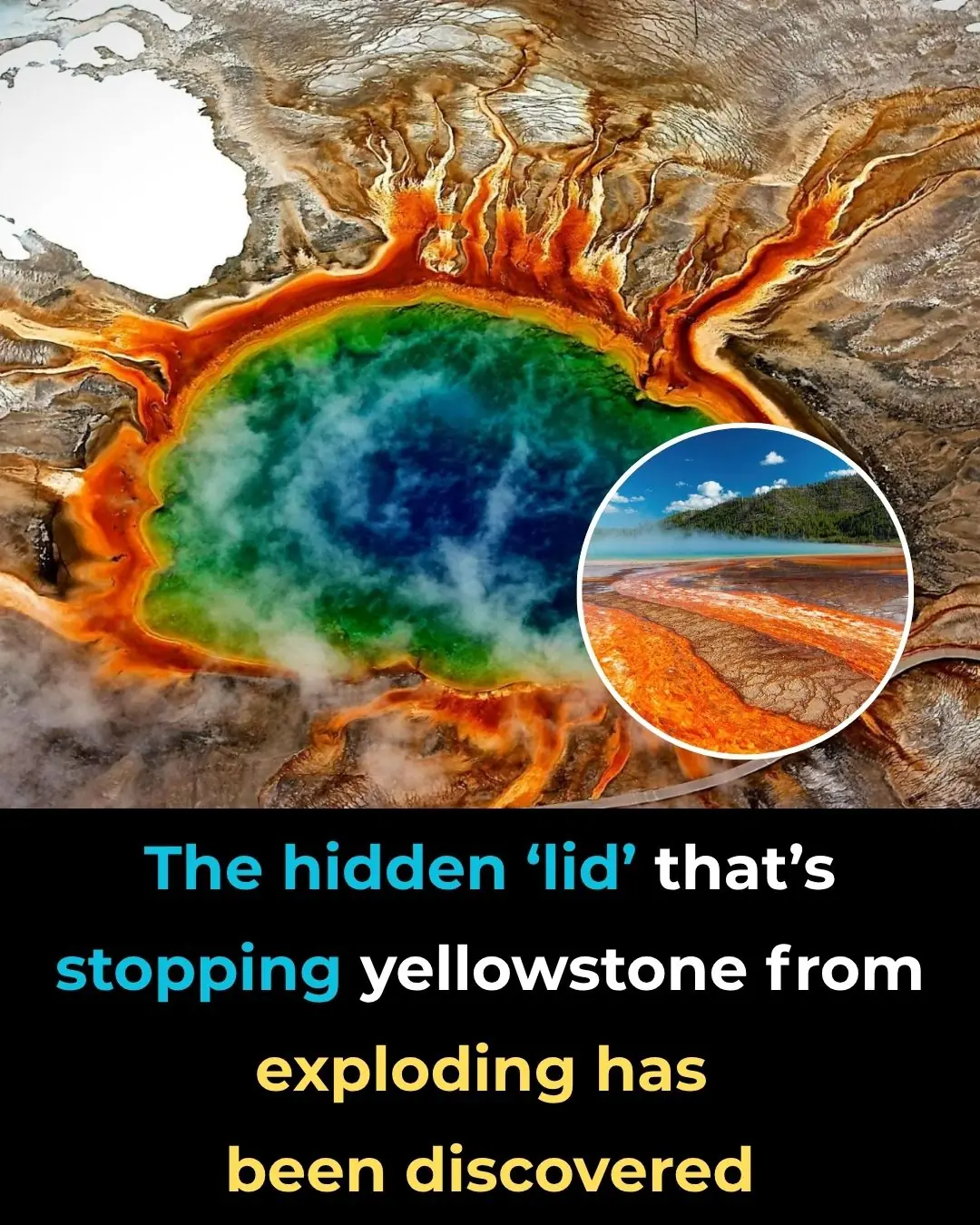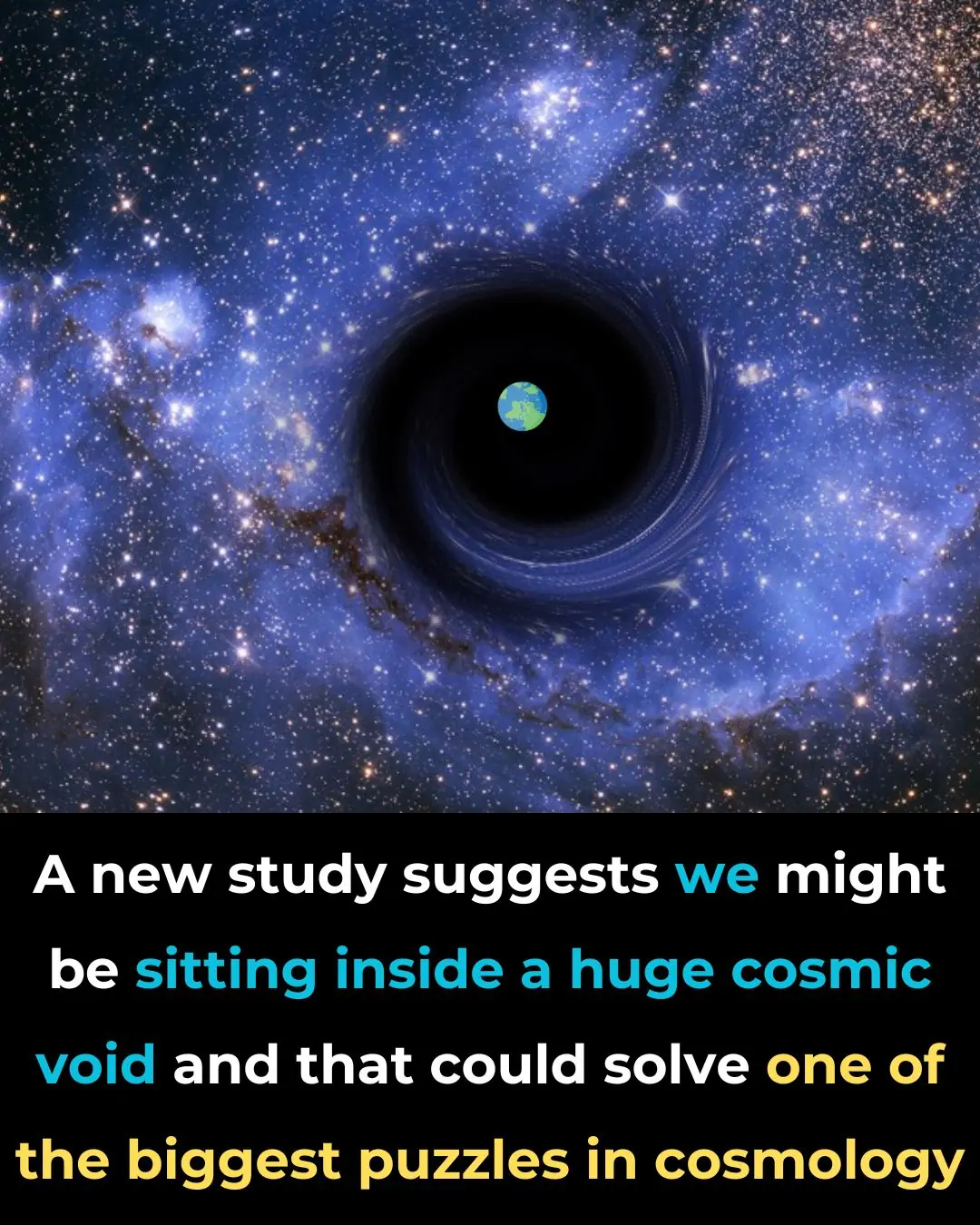
We are receiving strange radio signals from deep beneath the Antarctic ice. No one knows why.
High above the frozen stillness of Antarctica, an instrument designed to listen for whispers from the cosmos picked up something it couldn’t explain. The Antarctic Impulsive Transient Antenna, or ANITA, was launched to detect the faint radio signals emitted by high-energy particles — cosmic messengers traveling across unimaginable distances. But during its flights between 2016 and 2018, it caught something entirely unexpected: radio signals appearing to rise not from the sky, but from deep within the Earth itself. They arrived at angles and with intensities that defied the laws of particle physics as we currently understand them.
For years, scientists have tried to make sense of these anomalies. Could they be rare neutrinos behaving in ways not yet documented? Or are they the result of unknown interactions, strange propagation effects, or even a hint at physics beyond the Standard Model? Despite rigorous analysis, cross-examination with other observatories, and no shortage of speculation, the signals remain officially classified as “unexplained.” Yet rather than write them off, researchers have leaned in — not chasing headlines, but carefully building better tools and expanding their methods in the hopes of uncovering the truth.

The Discovery That Sparked the Mystery
Between 2016 and 2018, a balloon-borne detector called ANITA (the Antarctic Impulsive Transient Antenna), operated high above Antarctica, picked up a series of radio signals that continue to baffle scientists. Designed to detect bursts of radio waves produced when high-energy cosmic particles strike Earth’s atmosphere, ANITA instead recorded signals that seemed to be traveling upward — from deep within the Earth itself. These signals came from steep angles, around 30 degrees below the surface of the ice, an orientation that contradicted all known models of how such particles behave. The phenomenon challenged fundamental assumptions in particle physics: particles capable of generating such signals should not have been able to pass through thousands of kilometers of dense rock without being absorbed or scattered.
At first glance, these signals raised hopes that they might be evidence of high-energy neutrinos, ghost-like particles that are known for their ability to traverse vast distances through matter without interacting. As Stephanie Wissel, associate professor of physics at Penn State and part of the ANITA research team, explained, neutrinos are incredibly difficult to detect, but also incredibly valuable; they can carry pristine information from some of the universe’s most extreme and distant events. However, further investigation suggested the anomalies were unlikely to be caused by neutrinos. The signals not only arrived from unusual angles but also lacked the secondary patterns typically expected from known neutrino interactions. Wissel and her colleagues determined that, under current models, such particles should not have survived the journey through Earth to reach the detector, adding yet another layer of mystery.
To corroborate the findings, scientists cross-referenced data from other major detectors like IceCube in Antarctica and the Pierre Auger Observatory in Argentina — facilities specifically designed to capture high-energy particles including neutrinos. Neither registered anything resembling the anomalous events detected by ANITA, a discrepancy that narrowed the field of potential explanations. While the results do not confirm the presence of new particles or physics, they also cannot be easily dismissed as errors or background noise. The signals remain officially classified as “anomalous,” and nearly a decade later, their origin is still unknown. As Wissel noted, while many ideas have been explored, including the possibility of rare radio propagation effects or even unknown physical interactions, the scientific community continues to investigate without a definitive answer in sight.

How Neutrino Detection Works — and Why Antarctica Is the Ideal Lab
Detecting neutrinos is one of the most technically demanding challenges in modern astrophysics. These particles are electrically neutral, nearly massless, and interact so weakly with matter that trillions pass through our bodies every second without leaving a trace. But when a high-energy neutrino does interact — especially in dense materials like ice — it can produce a cascade of secondary particles, releasing a burst of radio waves known as a particle shower. Instruments like ANITA are designed to detect these brief radio flashes. Suspended from high-altitude balloons, ANITA’s antennas scan vast stretches of the Antarctic ice sheet, listening for the telltale radio emissions of a rare neutrino interaction. The system essentially functions as a telescope for invisible particles, looking downward instead of up, and monitoring an ice surface that acts as both target and amplifier.
Antarctica offers a near-perfect environment for this kind of detection. The continent’s thick, stable ice sheet provides an ideal medium for neutrinos to interact and generate signals, while its geographic isolation minimizes interference from human-made radio noise. The clean radio environment is crucial because the signals scientists are trying to detect are extraordinarily faint. Stephanie Wissel and other researchers working on ANITA emphasize that even a single well-documented neutrino interaction can yield invaluable information, potentially shedding light on cosmic events that occurred billions of years ago and across unimaginable distances. Neutrinos can travel virtually undisturbed from the edge of the observable universe, carrying data that photons or other particles could not preserve.
ANITA’s balloon-borne design also allows it to cover a massive observational footprint, sweeping over hundreds of thousands of square kilometers of ice during each flight. The detectors onboard are tuned to differentiate between different types of showers: those occurring in the ice and those that emerge into the atmosphere. Special attention is paid to tau neutrinos, which can interact in the ice to produce a tau lepton — a secondary particle that escapes the ice and decays in the air, generating a detectable air shower.
These unique events are modeled extensively through simulations and cross-checked with other instruments. When everything lines up — angle, timing, and energy — researchers can begin to back-trace the signal to its potential origin. The anomalous signals recorded by ANITA, however, defy that traceability, arriving at angles too steep to conform to known particle trajectories. Despite years of modeling and simulations, the data continues to resist easy classification, making Antarctica not just a passive landscape but an active participant in one of physics’ enduring enigmas.

What Makes These Signals Truly Anomalous
While neutrino detections are rare by nature, what sets the ANITA signals apart is not merely their scarcity but their defiance of physical expectations. The radio bursts captured during ANITA’s flights did not behave like signals from known particles. Their steep upward angles suggest a path through thousands of kilometers of Earth — a journey that, according to current models, should have extinguished any such signal long before it reached the detector. The particles believed to be responsible would have had to pass through solid rock and ice without interacting, then somehow create a strong, clear signal as they exited. This is not only statistically improbable but, under the rules of standard particle physics, virtually impossible.
Researchers ruled out more mundane explanations early on. They accounted for noise, reflected signals, and potential interference from known cosmic rays or background radiation. The team ran extensive simulations, comparing the events with thousands of modeled particle interactions, and cross-checked against data from other detectors such as IceCube and the Pierre Auger Observatory. Neither of these experiments — both of which have years of exposure and are sensitive to similar phenomena — observed anything like what ANITA recorded. This absence of corroboration makes the ANITA detections harder to dismiss, but also more perplexing. If the signals were due to known neutrinos, they should have appeared elsewhere; if they were instrumental glitches, they should not have matched such a consistent profile.
The possibility that these signals represent some form of new physics was considered early on. Some speculated they might be evidence of unknown particles, or even hints of interactions involving dark matter. However, subsequent reviews and experiments have not produced confirming evidence to support these more exotic interpretations. As Stephanie Wissel pointed out, the lack of repeated observations by other detectors limits how far scientists can push those theories. Instead, the working consensus among many researchers is that the anomalies could stem from an as-yet-unidentified atmospheric or geophysical phenomenon, or a radio propagation effect specific to the ice and horizon geometry of Antarctica. Despite multiple avenues of inquiry, no clear mechanism has emerged. The result is a scientific stalemate — one that continues to challenge assumptions and spark new lines of inquiry.

The Next Frontier: A New Generation of Detectors
The enduring mystery of ANITA’s anomalous signals has galvanized a new wave of research, aimed at building more sensitive instruments and refining the tools available to cosmic particle hunters. Among the most promising efforts is the Payload for Ultrahigh Energy Observations (PUEO), a next-generation balloon experiment being led by physicist Abigail Vieregg at the University of Chicago, with collaborators across major U.S. institutions, including Penn State. Scheduled to fly over Antarctica, PUEO builds directly on ANITA’s design but incorporates major upgrades in sensitivity, signal resolution, and directional accuracy. Its mission is clear: to capture clearer, more numerous signals and help determine whether the puzzling detections from years past were rare statistical outliers, misunderstood background events, or genuine signs of new physical phenomena.
One of PUEO’s key improvements lies in its enhanced ability to isolate weak radio emissions from background noise. In a detection environment where even one true signal can hold cosmic significance, increasing the signal-to-noise ratio is critical. Stephanie Wissel, whose team at Penn State is involved in designing instruments for the project, notes that improved detector geometry, refined electronics, and better modeling tools will allow PUEO to discriminate between different types of particle showers with far greater precision. The system is being designed not just to confirm or refute ANITA’s findings but to create an entirely new dataset that will inform the next generation of particle physics research. It represents a shift in both scale and sophistication — a leap forward intended to match the growing complexity of the questions scientists are now asking.
Beyond hardware, these new missions also reflect a deeper change in how scientists approach unresolved anomalies. Rather than rush to conclusions or dismiss unexplained results, researchers are investing in long-term, collaborative solutions that embrace uncertainty as a catalyst for discovery. The design of PUEO and other projects acknowledges that capturing rare events may require enormous observational exposure and meticulous calibration. With data from instruments like IceCube, the Pierre Auger Observatory, and now PUEO being integrated into cross-referenced frameworks, the field is moving toward a more holistic view of how ultrahigh-energy particles travel, interact, and signal their presence. Whether or not the ANITA anomalies ever receive a definitive explanation, they have already had a lasting impact by sharpening the questions and elevating the science behind neutrino detection.

Why Scientific Mysteries Like This Matter
Unresolved findings like the radio signals detected by ANITA may appear, at first glance, to be technical curiosities — statistical blips or fringe anomalies best left to theoretical specialists. But in science, especially in fields like astrophysics and particle physics, such outliers often serve as the seeds of transformative breakthroughs. These signals remind us that our models of the universe, no matter how sophisticated, are still approximations — maps, not the terrain. As Stephanie Wissel and other researchers have emphasized, the pursuit of elusive signals like these isn’t just about finding answers; it’s about refining the questions. Even when anomalies resist interpretation, they expand the frontier of what we know and highlight the edges of what we don’t.

Continued investment in cutting-edge detection technologies — from balloon-borne observatories over Antarctica to deep-ice arrays like IceCube — reflects a broader commitment to curiosity-driven science. These projects are complex, costly, and often yield sparse results. Yet each faint signal collected, each unexpected result, carries the potential to rewrite chapters of fundamental physics. In the case of the ANITA anomalies, the mystery has already prompted stronger international collaborations, more robust detector design, and renewed attention to the subtleties of radio wave propagation through ice and rock. The upcoming PUEO mission embodies this ethos: a patient, methodical pursuit of truth that acknowledges how little we may yet understand about the universe’s most energetic and mysterious particles.
Ultimately, scientific anomalies are not roadblocks — they are signposts. They point to the limits of current understanding and invite us to imagine what lies beyond. Whether ANITA’s strange signals turn out to be the first glimpse of new physics or a misunderstood artifact of nature’s complexity, the effort to investigate them is already a meaningful endeavor. In a time when easy answers are often preferred over difficult questions, there is something quietly powerful about letting a mystery remain open — not indefinitely, but long enough to learn from its silence. The unknown, after all, is where science does its most important work.
News in the same category


Healing Power And Important Safety Tips Of Castor Leaves

Man Kicked Out of Dubai on £3,000 Holiday Over His Face Tattoos

The hidden ‘lid’ that’s stopping Yellowstone from exploding has been discovered

This Image Has People Perplexed. Can You Solve It?

Our Planet Was Once a Giant Water World, Researchers Say

Scientists Create Usable Hydrogen Fuel Using Only Water and Sunlight

AI is Finally Learning to Translate Cat Meows Into Human Speech. Here Are the Tools to Try

What causes the green ring around hard-boiled eggs?

Scientists Say More Animals Are Conscious Than We Ever Imagined—Even Insects

5 foods you should never keep overnight

63 Earths Can Fit Comfortably Inside Uranus

Scientists Develop Eco-Friendly Concrete Alternative From Sugarcane Waste, Called Sugarcrete

Mom Tells Boy He Can Pick Any Animal At Shelter. He Picked This Eldery, Overweight And Shy Cat

A New Study Suggests We Might Be Sitting Inside a Huge Cosmic Void and That Could Solve One of the Biggest Puzzles in Cosmology

What Your Ankle Bracelet Really Says About You — It’s More Than Just Jewelry

Scientists Turn Coffee Waste Into Bricks—And They’re Twice as Strong as Standard

The Amount of Electricity Now Being Generated From Solar Is Unbelievable

Scientists Turn Coffee Waste Into Bricks—And They’re Twice as Strong as Standard
News Post

The Ultimate Stand: A Woman's Fight to Reclaim Her Dream Home from Entitled In-Laws and an Irresponsible Husband
Discover the inspiring story of a woman who worked tirelessly to build her dream home, only to have it claimed by her husband’s family. A tale of strength, resilience, and the ultimate stand for respect and self-worth.

Lip Reader Reveals Shocking Words CEO Said To Woman On Coldplay Kiss Cam

3 Incredible Airplane Stories That Will Leave You Speechless
Discover three shocking and heartwarming true stories that prove anything can happen when you’re 30,000 feet in the air. From conmen to surprising proposals, these tales will leave you in awe.

I Didn't Tell My Husband's Family I Speak Their Language, and It Helped Me Uncover a Sh0cking Secret About My Child
What happens when secrets are buried in a marriage? Discover how a simple misunderstanding and language barrier uncovered shocking truths. Read the story of betrayal, love, and trust in this emotional tale.

“I’m Done Paying!” — The Day She Finally Stood Up to Her Husband’s Family Li3s
Alina, tired of being the financial lifeline for Sergey and his mother, decides it’s time to put herself first. After uncovering the truth about their living situation, she confronts Sergey, forcing him to face the consequences of his neglect. What foll

She Was Paying Rent for Two Years — Until a Stranger in the Elevator Said One Sentence That Changed Everything
For two years, she thought she was paying rent — until a neighbor revealed the apartment belonged to her husband’s mother. Anna quietly uncovered the truth behind the monthly payments, and when the facts were undeniable, she chose to walk away — wi

A little girl shares her lunch with a hungry classmate — years later he shows up at her wedding, and who would have thought
In the noisy cafeteria of an elementary school, a little girl named Lilia noticed a lonely boy with an empty tray. She shared her lunch, expecting nothing in return. Years later, as she stood at the altar in her wedding dress, that same boy—now a succes

Homeless Dad of Four Gives His Last $2 to a Stranger—Wakes Up to a Life-Changing Surprise!
When Brandon, a homeless father of four, gave his last $2 to help an elderly man buy a bottle of water, he had no idea that simple gesture would turn his life upside down. The next day, he inherited a massive company and a lavish estate—only to find him

After the Divorce, My Dad Always Chose His New Family's Kids—But He Didn't Expect This at My Graduation Party
They say family is everything, but sometimes, it’s the family that hurts you most. My name is Sharon, and I’ll never forget the day my father’s favoritism towards his new family crossed the line—only to learn the hard way that actions have consequ

"She Ignored His Letters for 53 Years, But When She Finally Visited Him, She Found a Life Sh@ttered"
They say your first love never fades, but for Bessie Walsh, it wasn’t just her first love that she’d never forgotten—it was the unresolved past that had stayed with her for over five decades.

"My Sister-in-Law Made My Mom Sleep on the Floor During a Family Trip—Here’s What Happened Next"
They say family is everything. But sometimes, family can hurt you in ways you’d never expect. My name is Sharon, and I’m about to tell you how my sister-in-law turned what should’ve been a beautiful family trip into the most humiliating experience f

My Husband and His Mother Tried to Take Our Apartment to His Sister — But My Mom's Response Shut Them Down for Good
When a young wife’s husband and mother-in-law suggested giving away her apartment to his sister, her mother’s calm but powerful response stunned the entire family. A story of betrayal, boundaries, and quiet strength.

10 Habits That Harm Your Heart That You Probably Didn’t Know About

15 Common Cancer Symptoms You Shouldn’t Ignore

The Anti-Cancer Diet: Evidence-Based Cancer-Fighting Foods for Prevention

If Facebook Is Not Spying on Us, Why Do We Get Ads for Things We Speak About?

Healing Power And Important Safety Tips Of Castor Leaves

Man Kicked Out of Dubai on £3,000 Holiday Over His Face Tattoos
